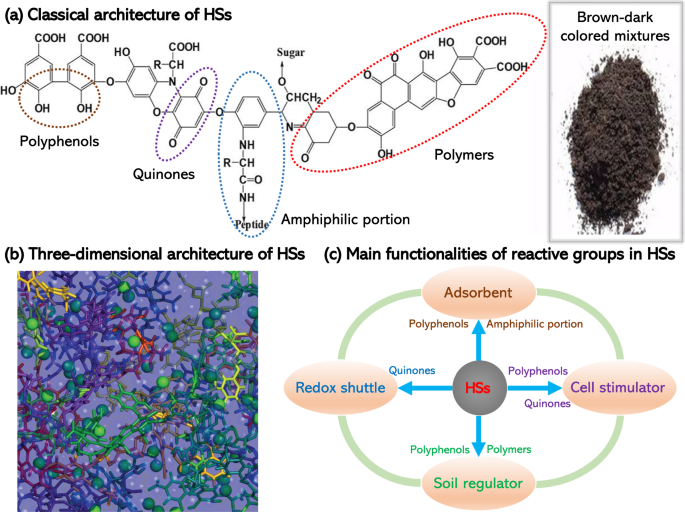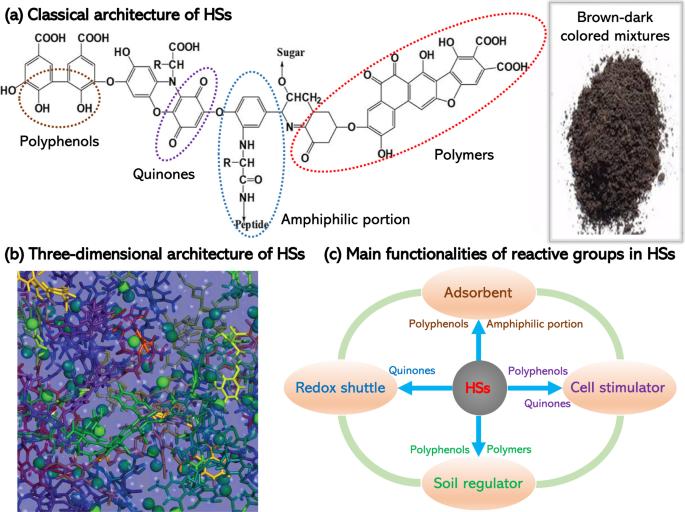人工调节腐殖化,创造类腐殖质生物刺激物
IF 10.4
1区 工程技术
Q1 ENGINEERING, CHEMICAL
引用次数: 0
摘要
腐殖质(HSs)作为全球农业的 "黑金",在清除有害化合物、维持碳质量平衡和提高作物产量方面具有重要的环境意义。遗憾的是,从自然界中提取的腐殖质资源不足,导致腐殖质市场的供需和预算逐渐增加。鉴于木质素和HS具有相似的结构,人工调节腐殖化(ARH)在定向控制木质素的氧化裂解和/或木质素前体的自由基共聚方面具有很大的潜力,从而产生重新组装的低聚物和/或聚合物,其功能和功效可与HS媲美。在此,我们创新性地提出了不同的 ARH 策略,以解决危险化学品问题并创造类腐殖质生物刺激剂(H-LBs)。我们简要介绍了天然HS的特点和功能,并总结了基于木质素及其前体的ARH的最新方法和机制。其中,比较重点介绍了生物堆肥、漆酶催化、白腐真菌降解、基于芬顿的高级氧化和水热腐殖化等 ARH 途径,以治理有害底物、加强碳固存、生成 H-LBs 和实践可持续农业。此外,还说明了 H-LBs 促进作物生长的机制。在调节腐殖化途径方面取得的进展可解决原位和非原位 ARH 的技术瓶颈问题,因为木质素及其小衍生物储量丰富,对净化污染物、减少二氧化碳排放和丰富农业生态系统中的 H-LBs 非常重要。本文章由计算机程序翻译,如有差异,请以英文原文为准。


Artificially regulated humification in creating humic-like biostimulators
Humic substances (HSs), as the “black gold” of global agriculture, have a crucial environmental significance in cleaning harmful compounds, maintaining carbon mass balance, and increasing crop productivity. Unfortunately, the resources of HSs extracted from nature are insufficient, causing the supply, demand, and budget of the humus market to gradually increase. Given the analogous architectures of lignin and HSs, artificially regulated humification (ARH) has a great potential for directionally controlling the oxidative cleavage of lignin and/or the radical copolymerization of lignin precursors, to produce reassembled oligomers and/or polymers that can compare favorably with the function and efficacy of HSs. Herein, different ARH strategies are innovatively proposed to tackle hazardous chemicals and create humic-like biostimulators (H-LBs). We briefly describe the characteristics and functionalities of natural HSs, and summarize the latest approaches and mechanisms of lignin and its precursor-based ARH. In particular, the ARH routes of bio-composting, laccase catalysis, white-rot fungal degradation, Fenton-based advanced oxidation, and hydrothermal humification are comparatively highlighted to govern harmful substrates, enhance carbon sequestration, generate H-LBs, and practice sustainable agriculture. Furthermore, the mechanisms for promoting crop growth of H-LBs are also illustrated. Advances in modulating humification pathways may solve the technological bottlenecks of ARH in-situ and ex-situ by well-stocked lignin and its small derivatives, which are important for decontaminating contaminants, reducing CO2 emissions, and enriching H-LBs in agroecosystems.
求助全文
通过发布文献求助,成功后即可免费获取论文全文。
去求助
来源期刊

npj Clean Water
Environmental Science-Water Science and Technology
CiteScore
15.30
自引率
2.60%
发文量
61
审稿时长
5 weeks
期刊介绍:
npj Clean Water publishes high-quality papers that report cutting-edge science, technology, applications, policies, and societal issues contributing to a more sustainable supply of clean water. The journal's publications may also support and accelerate the achievement of Sustainable Development Goal 6, which focuses on clean water and sanitation.
 求助内容:
求助内容: 应助结果提醒方式:
应助结果提醒方式:


